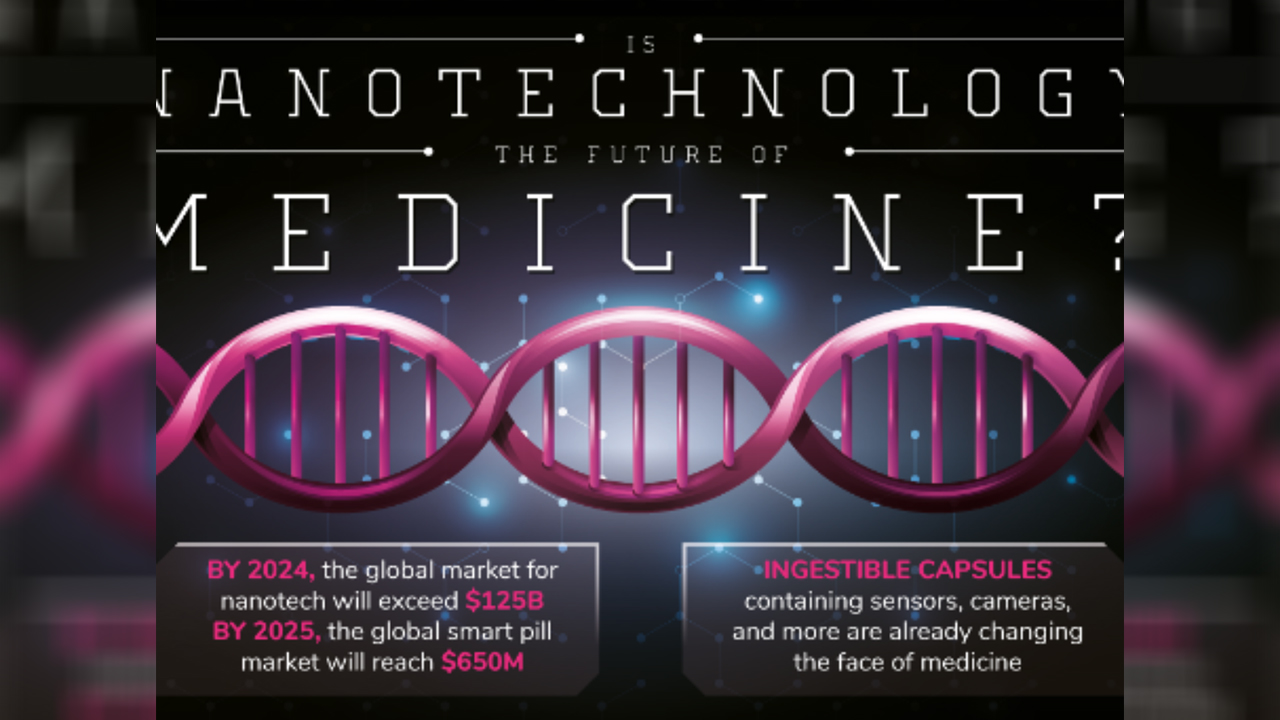Nanotechnology is the study and application of materials and devices at the scale of nanometers, which is about 1 billionth of a meter. This field has the potential to revolutionize medicine in many ways, including:
- Targeted drug delivery: Nanoparticles can be designed to carry drugs directly to specific cells or tissues, improving the effectiveness of treatment and reducing side effects. For example, nanoparticles have been used to deliver chemotherapy drugs to cancer cells, with fewer side effects to healthy cells.
- Early disease detection: Nanoparticles can be used to create new diagnostic tools that can detect diseases at an earlier stage, when they are more treatable. For example, nanoparticles have been used to create sensors that can detect cancer cells in blood or urine.
- Tissue engineering: Nanotechnology can be used to create new tissues and organs that can be used to repair or replace damaged tissue. For example, nanoparticles have been used to create scaffolds that can help to grow new bone tissue.
- Gene therapy: Nanoparticles can be used to deliver genes to cells, which could be used to treat genetic diseases or to create vaccines. For example, nanoparticles have been used to deliver genes to cells that have been damaged by radiation.
These are just a few of the many potential applications of nanotechnology in medicine. As the field continues to develop, it is likely to have a major impact on the way we diagnose, treat, and prevent diseases.
Here are some specific examples of how nanotechnology is being used in medicine today:
- Cancer treatment: Nanoparticles are being used to deliver chemotherapy drugs directly to cancer cells. This can help to reduce the side effects of chemotherapy, such as hair loss and nausea.
- Alzheimer’s disease: Nanoparticles are being developed to deliver drugs that can cross the blood-brain barrier, which is a barrier that prevents many drugs from reaching the brain. This could lead to new treatments for Alzheimer’s disease and other brain disorders.
- Heart disease: Nanoparticles are being used to create new imaging techniques that can visualize the heart in more detail. This could help doctors to diagnose and treat heart disease more effectively.
- Diabetes: Nanoparticles are being developed to deliver insulin more effectively to people with diabetes. This could help to improve blood sugar control and reduce the risk of complications from diabetes.
These are just a few examples of the many ways that nanotechnology is being used in medicine today. As the field continues to develop, it is likely to have a major impact on the way we diagnose, treat, and prevent diseases.
The Future of Nanotechnology in Medicine
The future of nanotechnology in medicine is very promising. As the field continues to develop, we can expect to see new and innovative applications of nanotechnology that will improve the lives of millions of people. Some of the potential future applications of nanotechnology in medicine include:
- Nanorobots: Nanorobots are tiny robots that can be used to perform medical tasks, such as delivering drugs, destroying cancer cells, or repairing damaged tissue.
- Intelligent implants: Intelligent implants are devices that can be implanted in the body to monitor health, deliver drugs, or treat diseases.
- Biosensors: Biosensors are devices that can detect chemicals or biological molecules in the body. They can be used to diagnose diseases, monitor treatment, or track changes in health.
- Tissue regeneration: Nanotechnology can be used to create new tissues and organs that can be used to repair or replace damaged tissue. This could have a major impact on the treatment of injuries and diseases.
The possibilities are endless, and the future of nanotechnology in medicine is very exciting. As the field continues to develop, we can expect to see even more innovative and life-changing applications of this technology.








